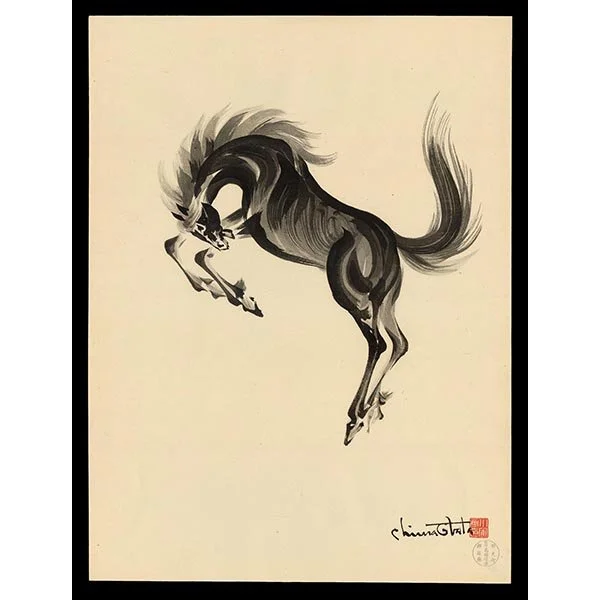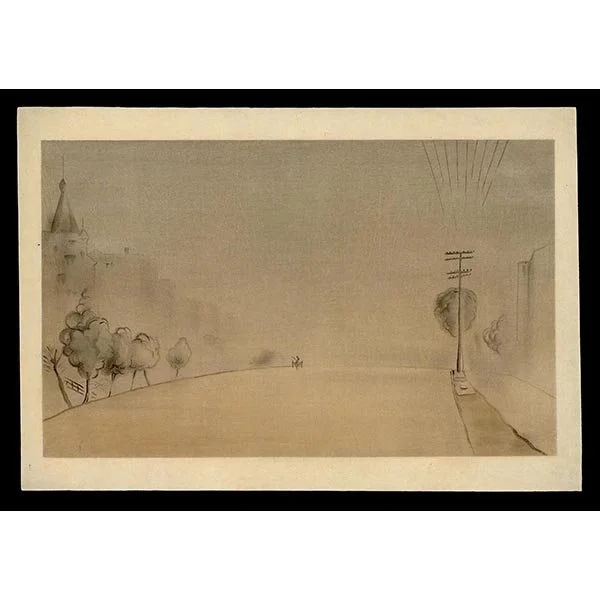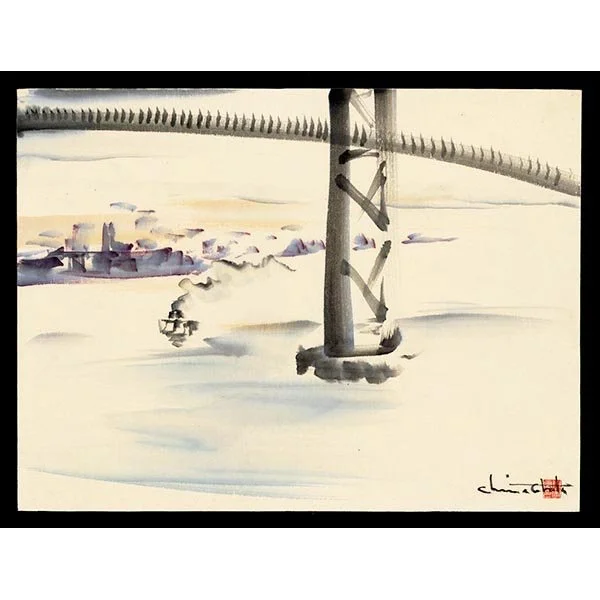Details
Chiura Obata, a pioneering Japanese-American artist, was born in Japan in 1885 and immigrated to the United States in 1903, eventually settling in California. Initially trained in traditional Japanese art, Obata’s exposure to American modernism profoundly influenced his style, blending Eastern techniques with Western innovation. His love for the natural beauty of the American landscape, particularly the Yosemite Valley, became a central theme in his work. His detailed paintings and woodblock prints of these iconic sites captured both their grandeur and tranquility, earning him widespread acclaim. However, his career took a harrowing turn when, during World War II, Obata was forcibly relocated to an internment camp for Japanese-Americans, where his resilience as an artist continued to shine, and his sketches documented the plight of his community. In recent years, Obata’s legacy has gained renewed attention, with major museum exhibitions now celebrating his unique contributions to both American and Japanese art.
A single branch descends and occupies Obata’s composition. Appearing delicate, much like a string of pearls, the branch is adorned with a grouping of maple leaves. The smattering of crimson across their complexion reveals the coming fall.
This deceivingly simple composition is a striking example of a master at work. With a single branch, Obata delivers the forest and reveals the cycles of the season. With this branch, the seemingly random spacing of leaves becomes a metaphor for Natural Law—the phenomena of nature itself at play. Perhaps the singularity of the subject points to a larger meaning, linking the work to Japanese Zenga painting. We are left with a vision of beauty as much as a koan, or riddle. How can a mere maple branch point The Way? Because The Way is none other than the branch itself.
Connoisseur's Note
This painting was acquired from Obata’s next-door neighbor in Berkeley, California. Not unusual, Obata was quite generous with his artwork and often gifted his original work to friends, students, and neighbors.











